Abstract
1. The relation of V̇O2 and speed was determined on six competition cyclists riding at speeds ranging from 12 km/hr to 41 km/hr on the runway of an airfield. Comparative measurements were made on the bicycle ergometer to determine the corresponding work rates, and from this information rolling resistance and air resistance were derived.
2. V̇O2 was a curvilinear function of cycling speed, and increased from 0·88 l./min at 12·5 km/hr to 5·12 l./min at 41 km/hr, mean body weight being 72·9 kg.
3. On the ergometer, V̇O2 was a linear function of work rate; maximum values up to 5·1 l./min (74·4 ml./kg min) and work rates up to 425 W (2600 kg m/min) were observed.
4. Data are presented on the relation of pedal frequency and speed in cycling, and on the relation of mechanical efficiency and pedal frequency, as determined on the ergometer.
5. The estimated rolling resistance for four subjects was 0·71 kg f. The drag coefficient was 0·79 and the drag area 0·33 m2. The values agreed well with results obtained by other methods.
6. The energy expenditure (power developed) in cycling increased approximately as the square of the speed, and not as the cube of the speed as expected. This was explained by the varying contribution of rolling resistance and air resistance to over-all resistance to motion at different speeds.
Full text
PDF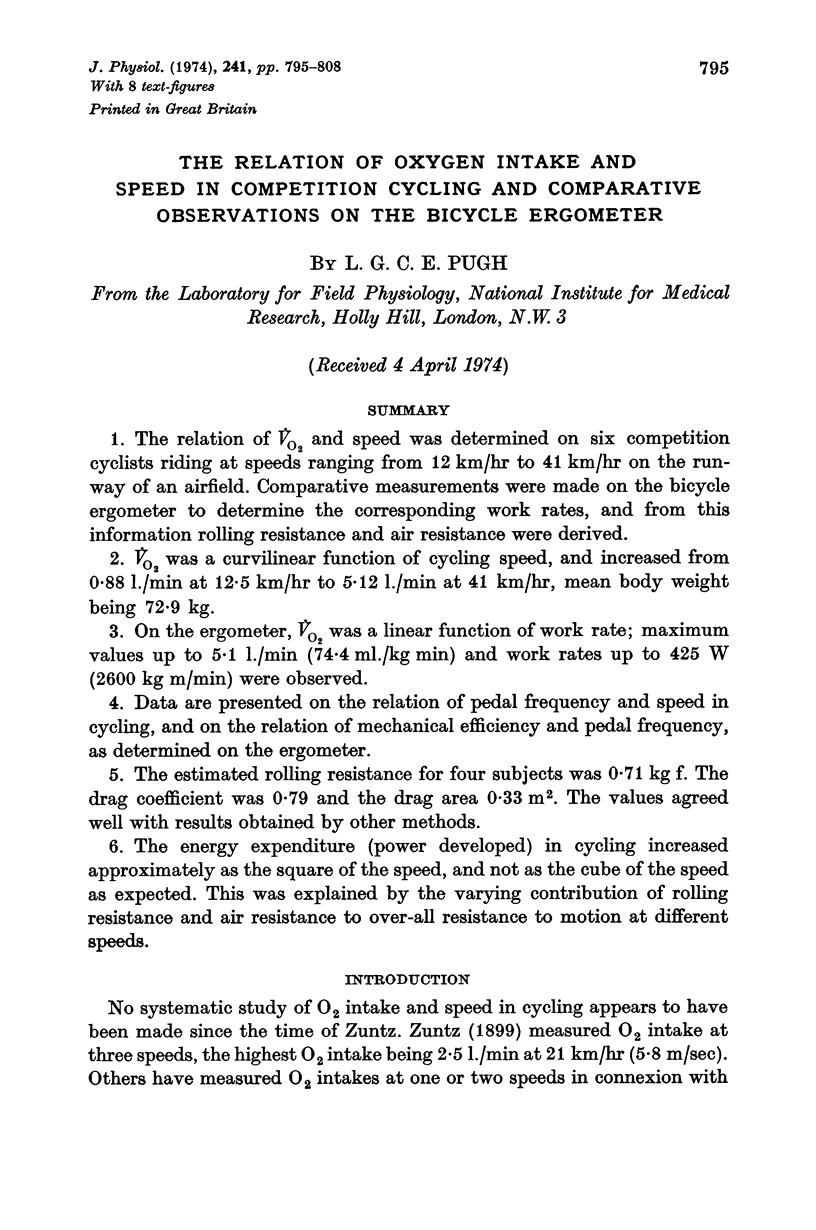
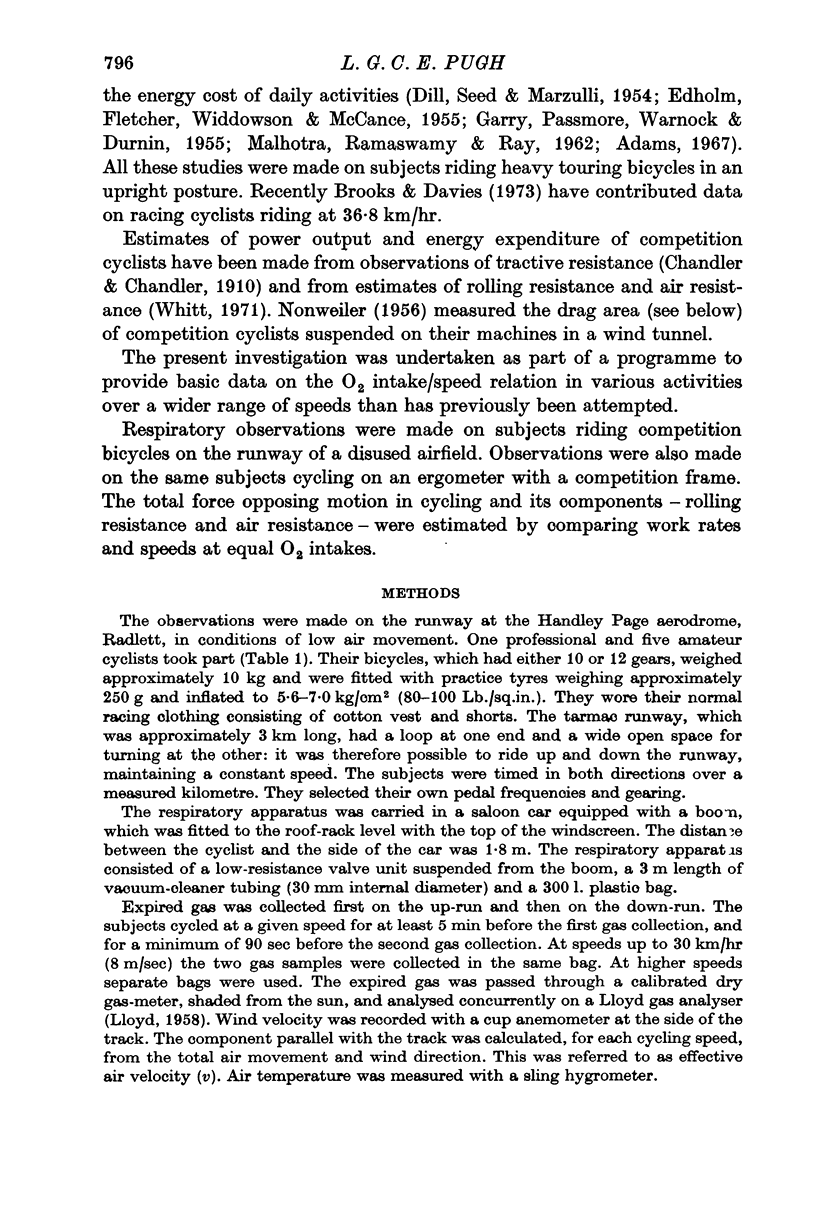
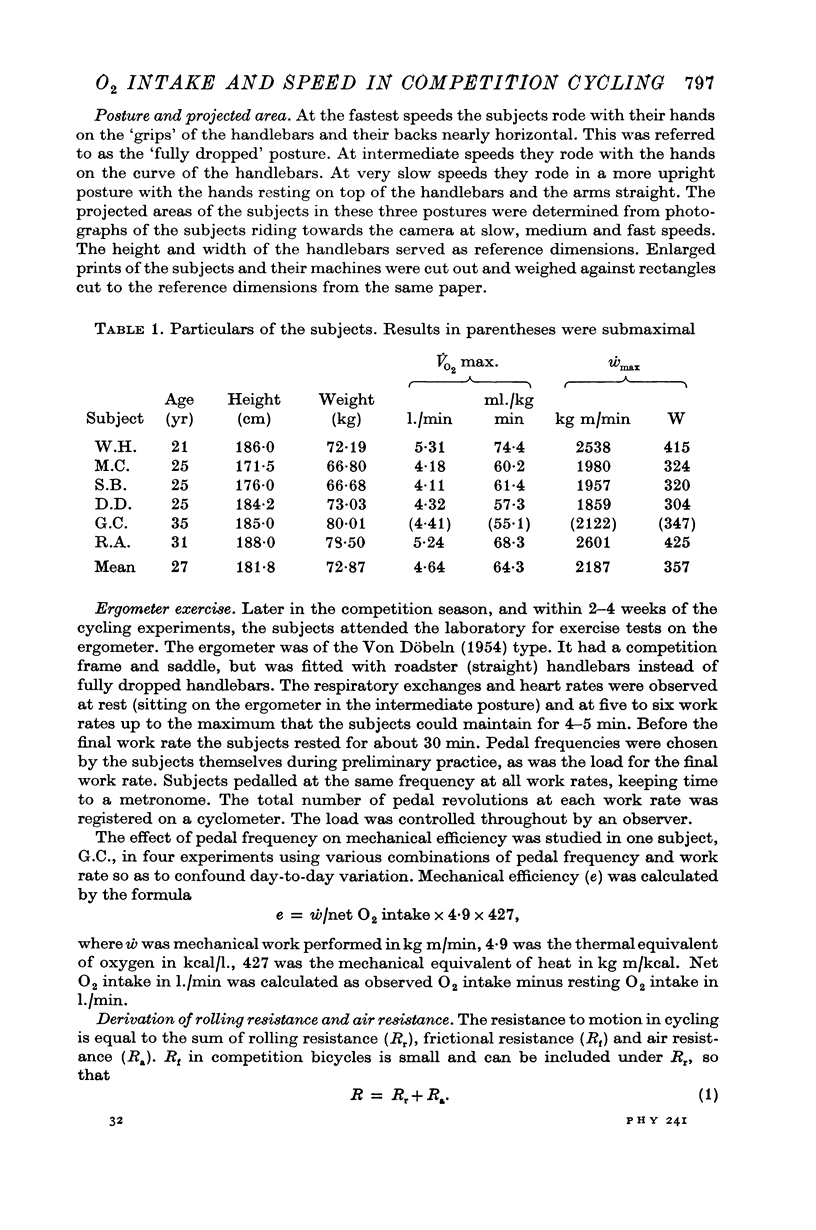

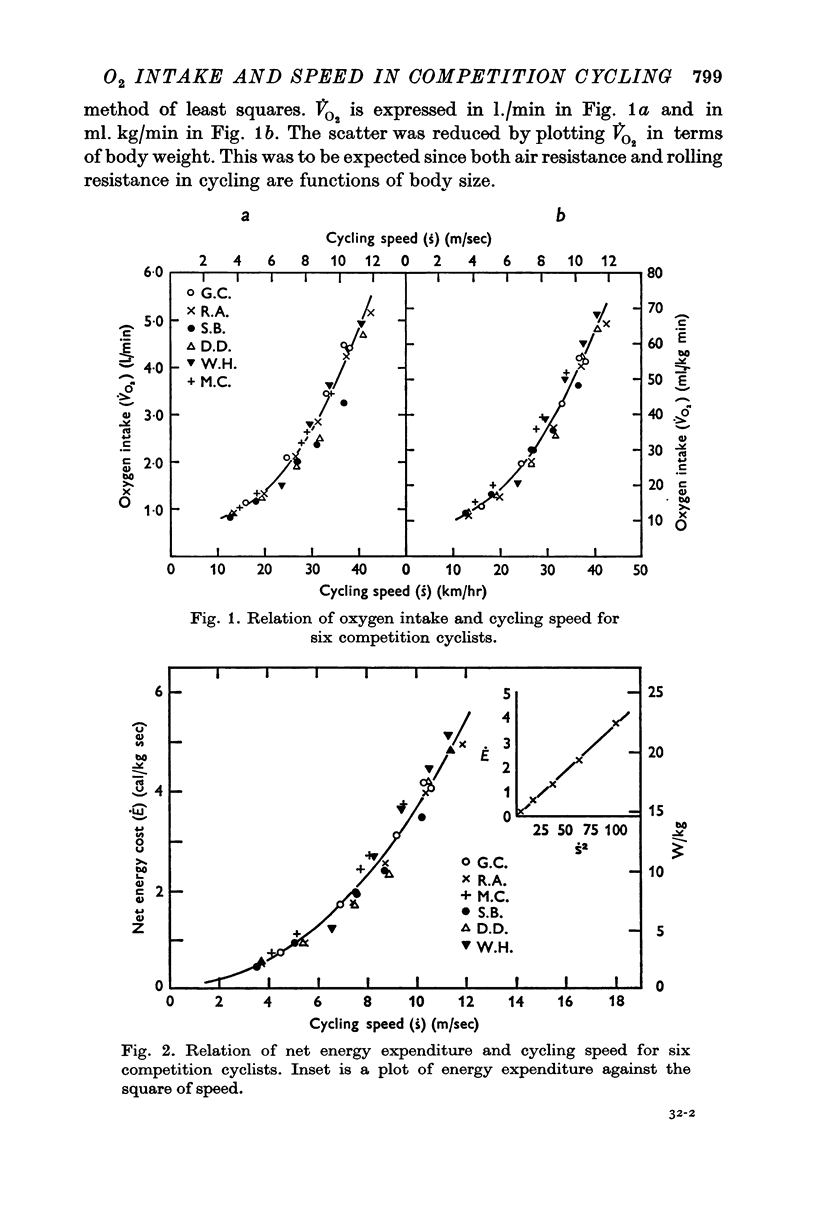
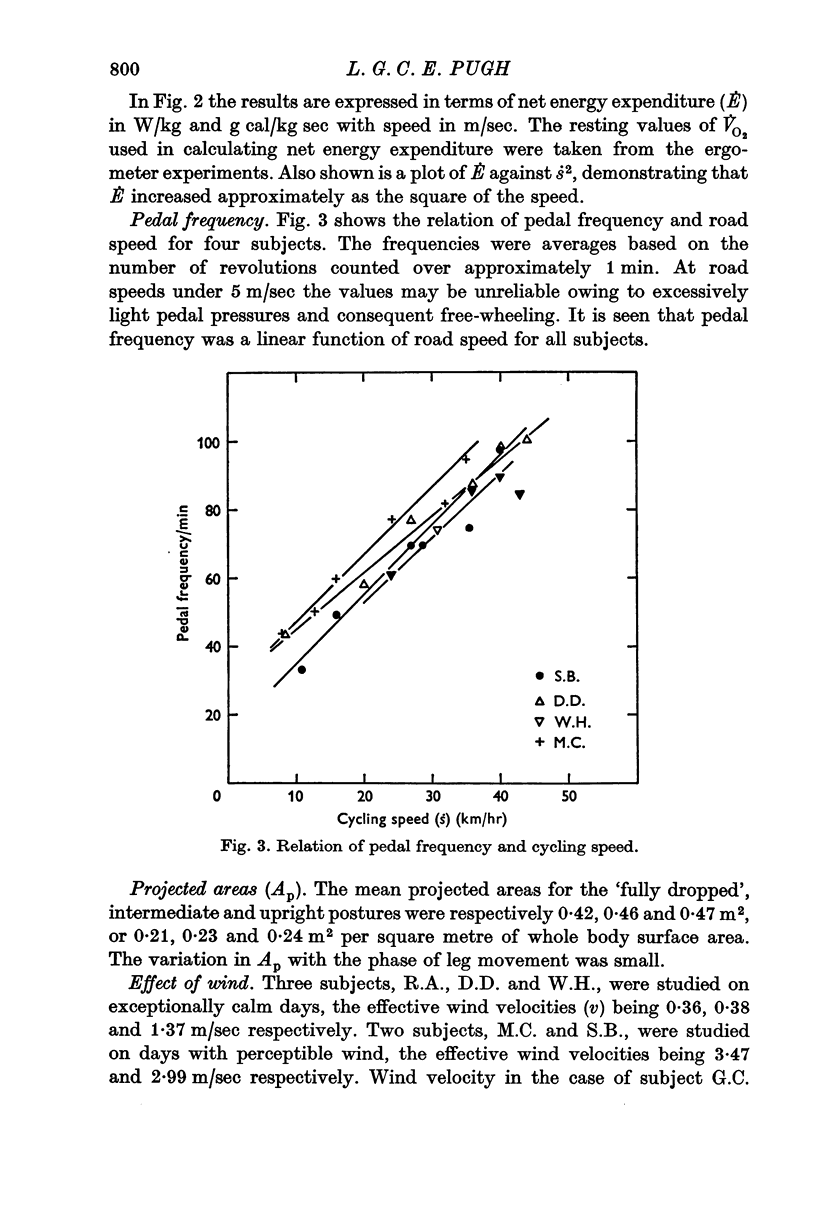
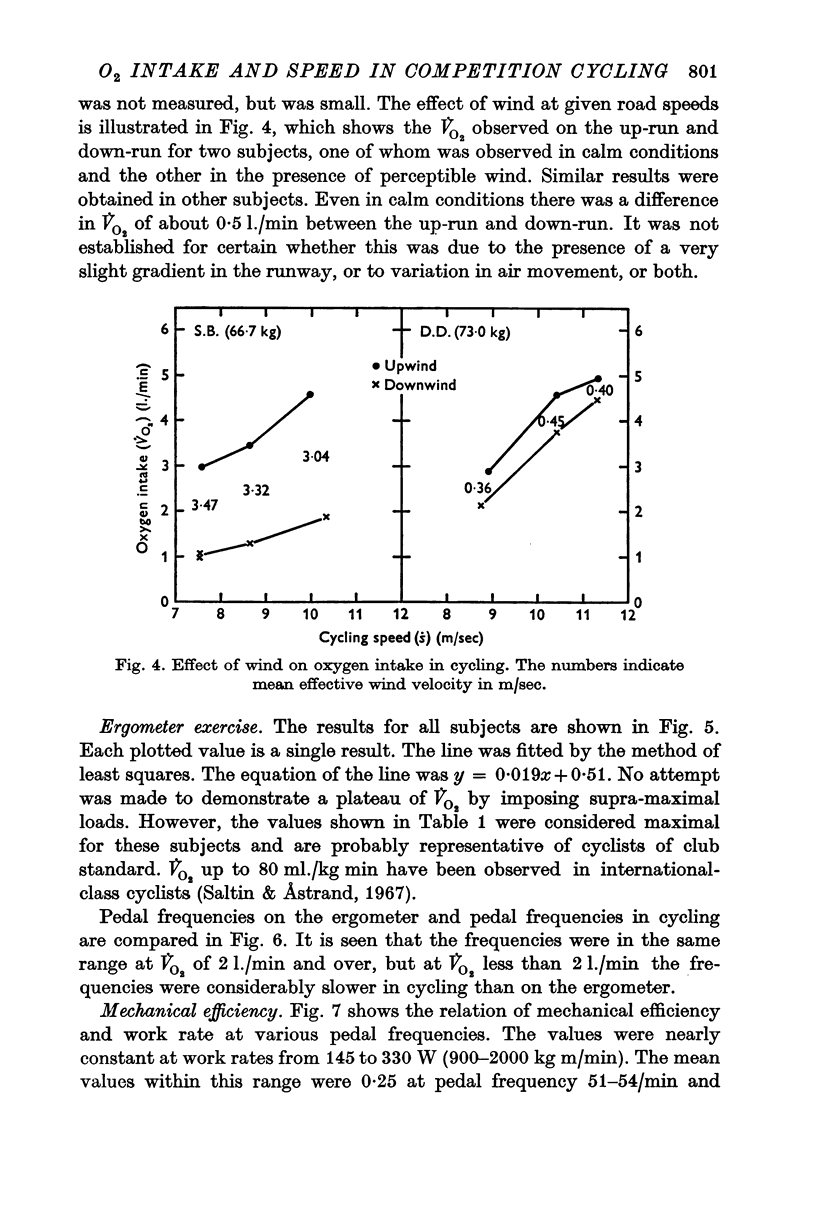
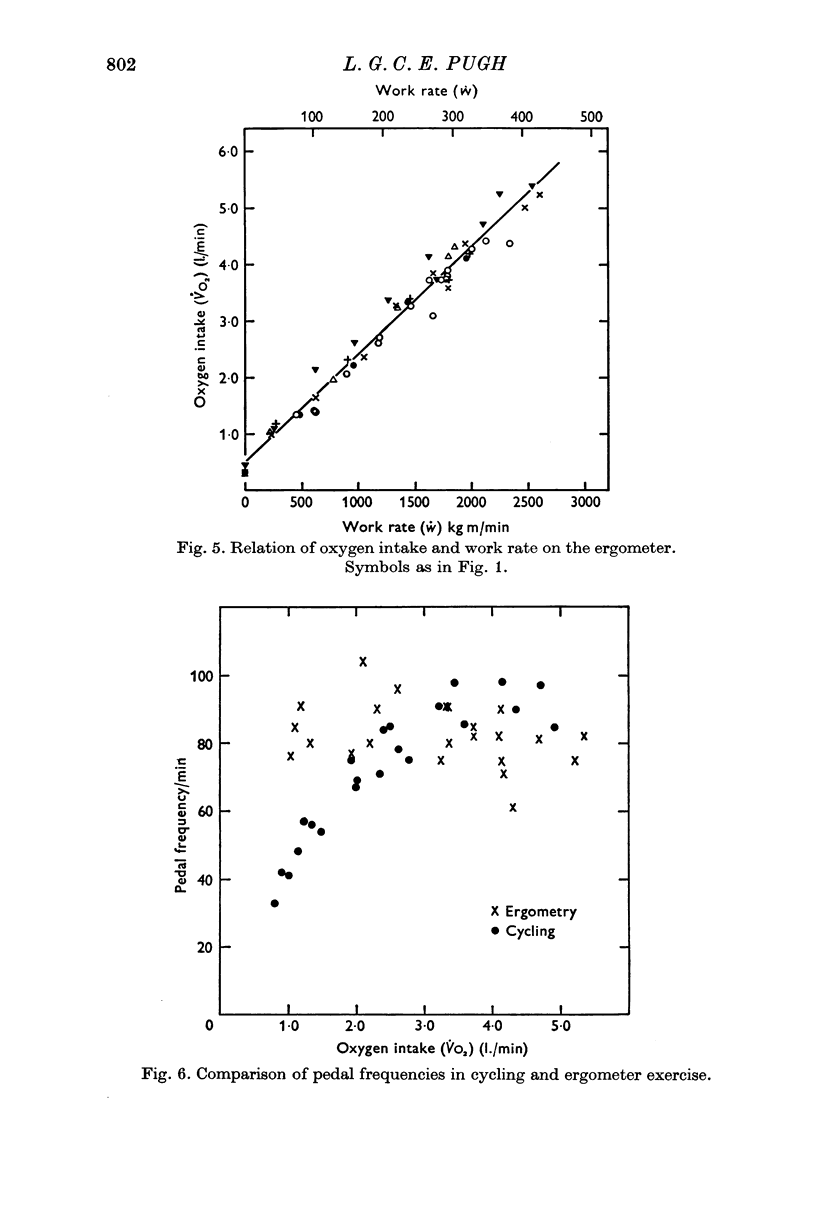
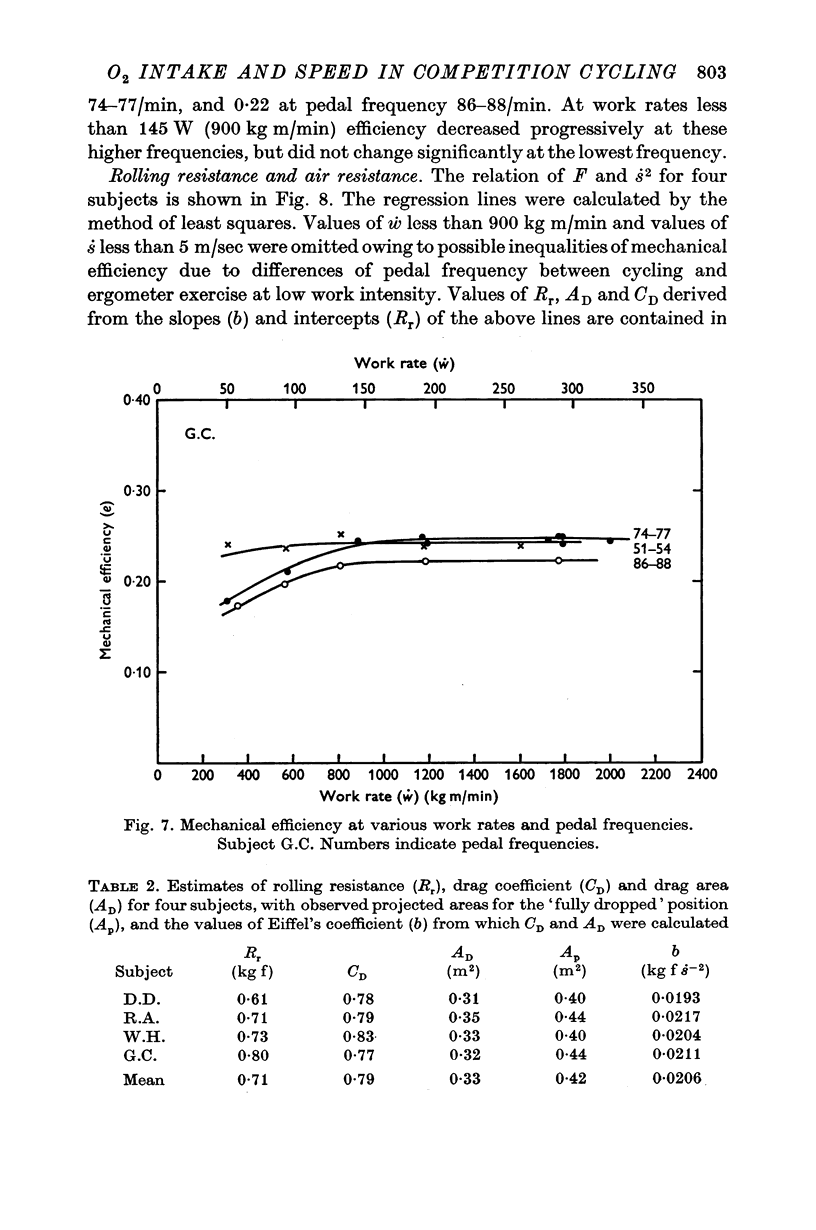
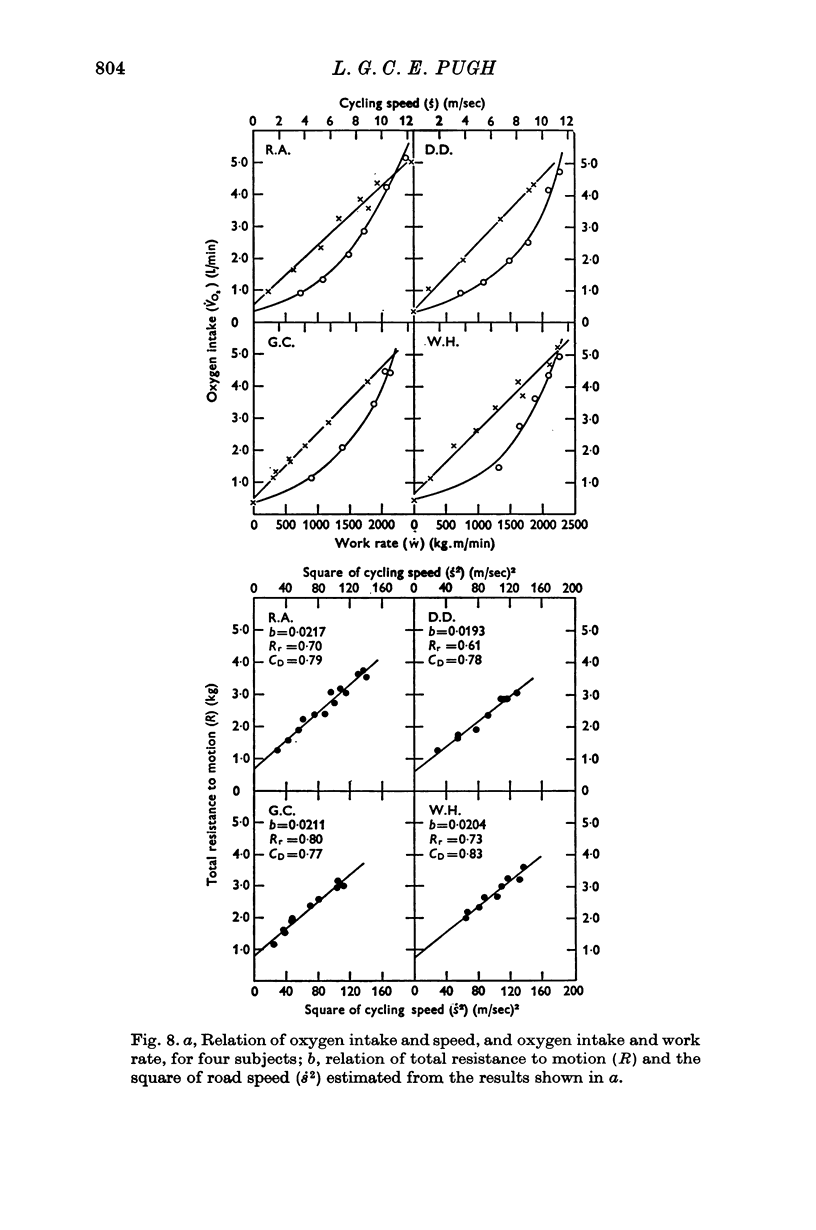
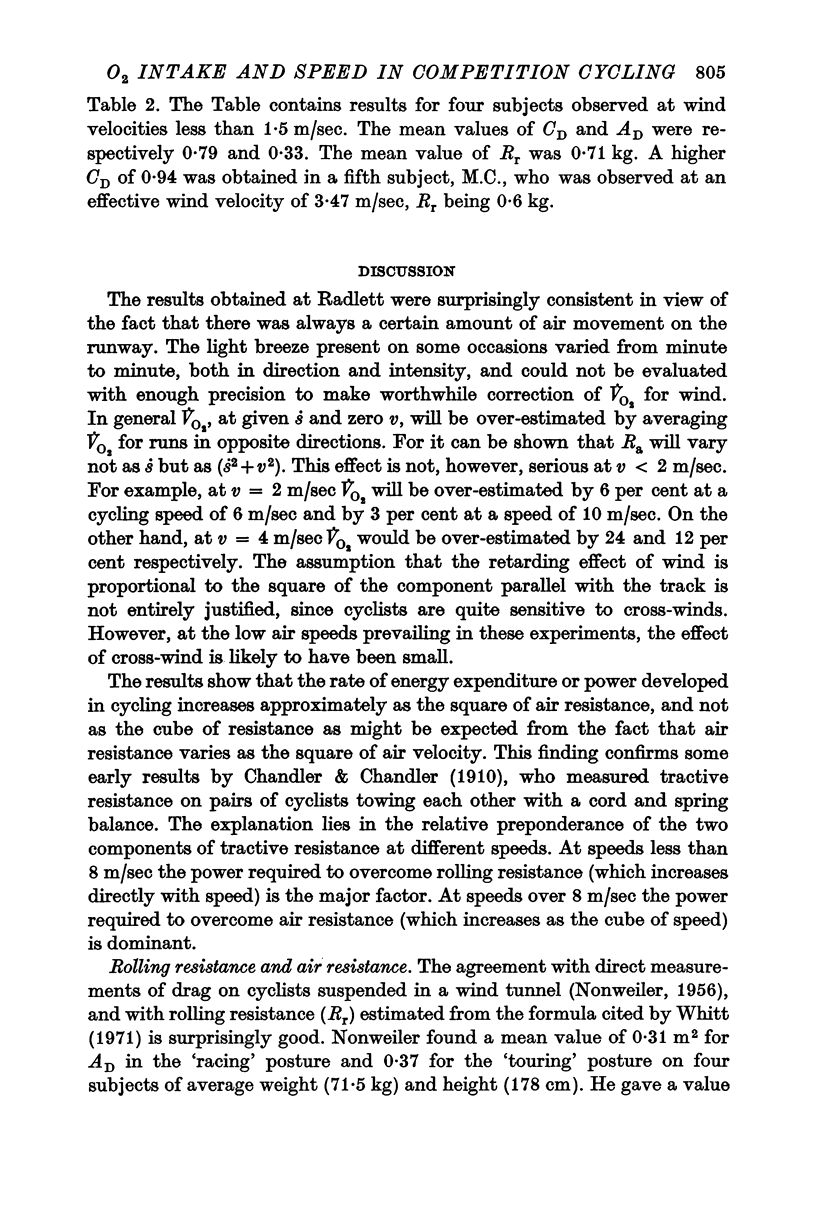
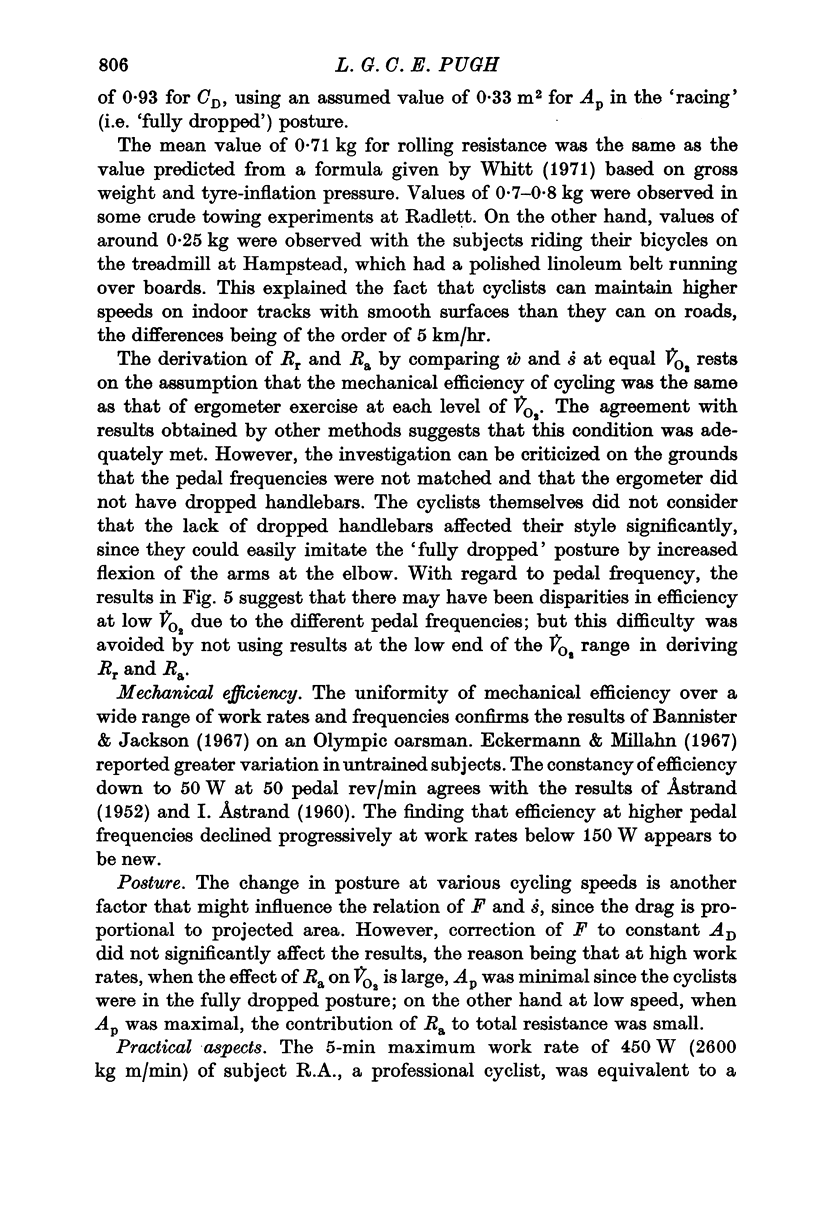
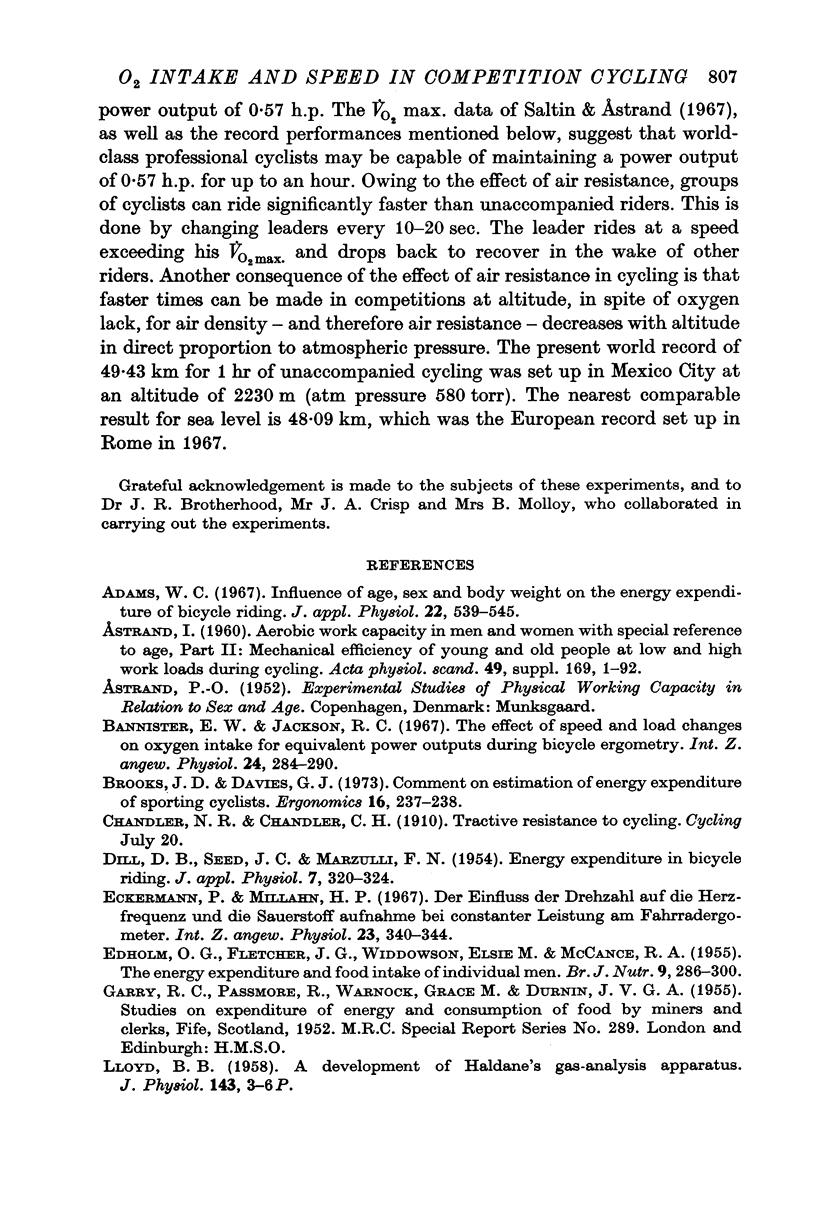
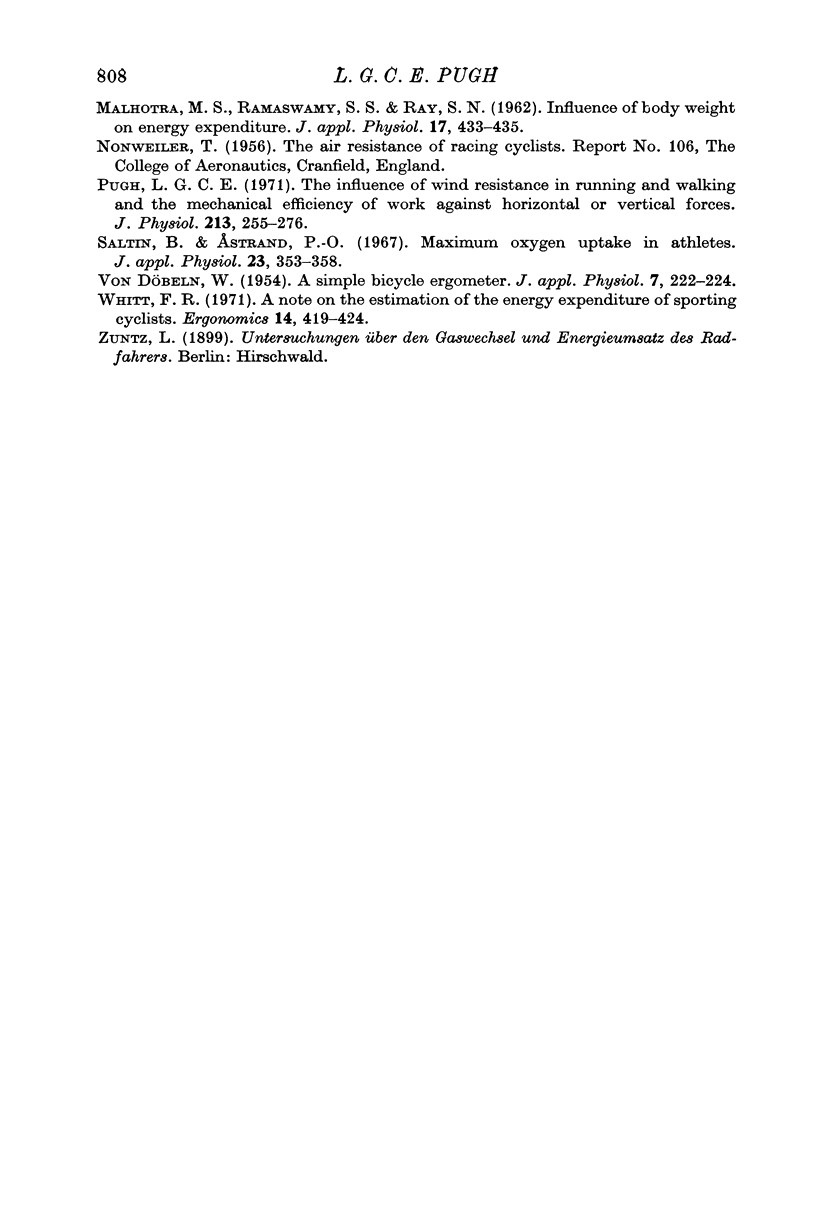
Selected References
These references are in PubMed. This may not be the complete list of references from this article.
- Banister E. W., Jackson R. C. The effect of speed and load changes on oxygen intake for equivalent power outputs during bicycle ergometry. Int Z Angew Physiol. 1967;24(4):284–290. doi: 10.1007/BF00698204. [DOI] [PubMed] [Google Scholar]
- Brooke J. D., Davies G. J. Comment on 'Estimation of the energy expenditure of sporting cyclists'. Ergonomics. 1973 Mar;16(2):237–238. doi: 10.1080/00140137308924500. [DOI] [PubMed] [Google Scholar]
- DILL D. B., SEED J. C., MARZULLI F. N. Energy expenditure in bicycle riding. J Appl Physiol. 1954 Nov;7(3):320–324. doi: 10.1152/jappl.1954.7.3.320. [DOI] [PubMed] [Google Scholar]
- EDHOLM O. G., FLETCHER J. G., WIDDOWSON E. M., MCCANCE R. A. The energy expenditure and food intake of individual men. Br J Nutr. 1955;9(3):286–300. doi: 10.1079/bjn19550040. [DOI] [PubMed] [Google Scholar]
- Eckermann P., Millahn H. P. Der Einfluss der Drehzahl auf die Herzfrequenz und die Sauerstoffaufnahme bei konstanter Leistun am Fahrradergometer. Int Z Angew Physiol. 1967 Mar 7;23(4):340–344. [PubMed] [Google Scholar]
- MALHOTRA M. S., RAMASWAMY S. S., RAY S. N. Influence of body weight on energy expenditure. J Appl Physiol. 1962 May;17:433–435. doi: 10.1152/jappl.1962.17.3.433. [DOI] [PubMed] [Google Scholar]
- Pugh L. G. The influence of wind resistance in running and walking and the mechanical efficiency of work against horizontal or vertical forces. J Physiol. 1971 Mar;213(2):255–276. doi: 10.1113/jphysiol.1971.sp009381. [DOI] [PMC free article] [PubMed] [Google Scholar]
- Saltin B., Astrand P. O. Maximal oxygen uptake in athletes. J Appl Physiol. 1967 Sep;23(3):353–358. doi: 10.1152/jappl.1967.23.3.353. [DOI] [PubMed] [Google Scholar]
- VON DOBELN W. A simple bicycle ergometer. J Appl Physiol. 1954 Sep;7(2):222–224. doi: 10.1152/jappl.1954.7.2.222. [DOI] [PubMed] [Google Scholar]
- Whitt F. R. A note on the estimation of the energy expenditure of sporting cyclists. Ergonomics. 1971 May;14(3):419–424. doi: 10.1080/00140137108931261. [DOI] [PubMed] [Google Scholar]


